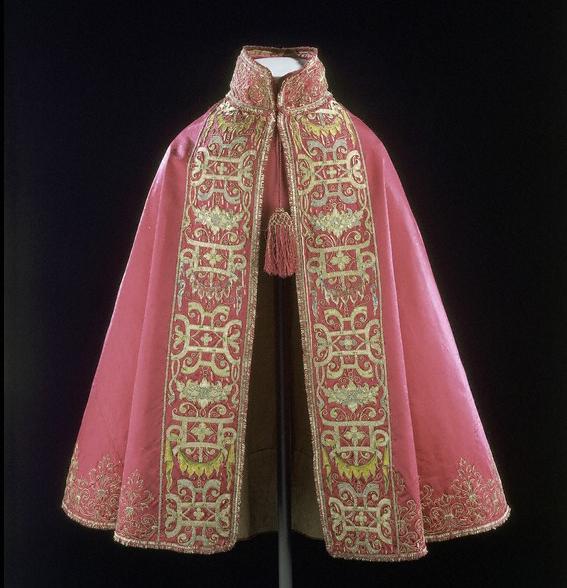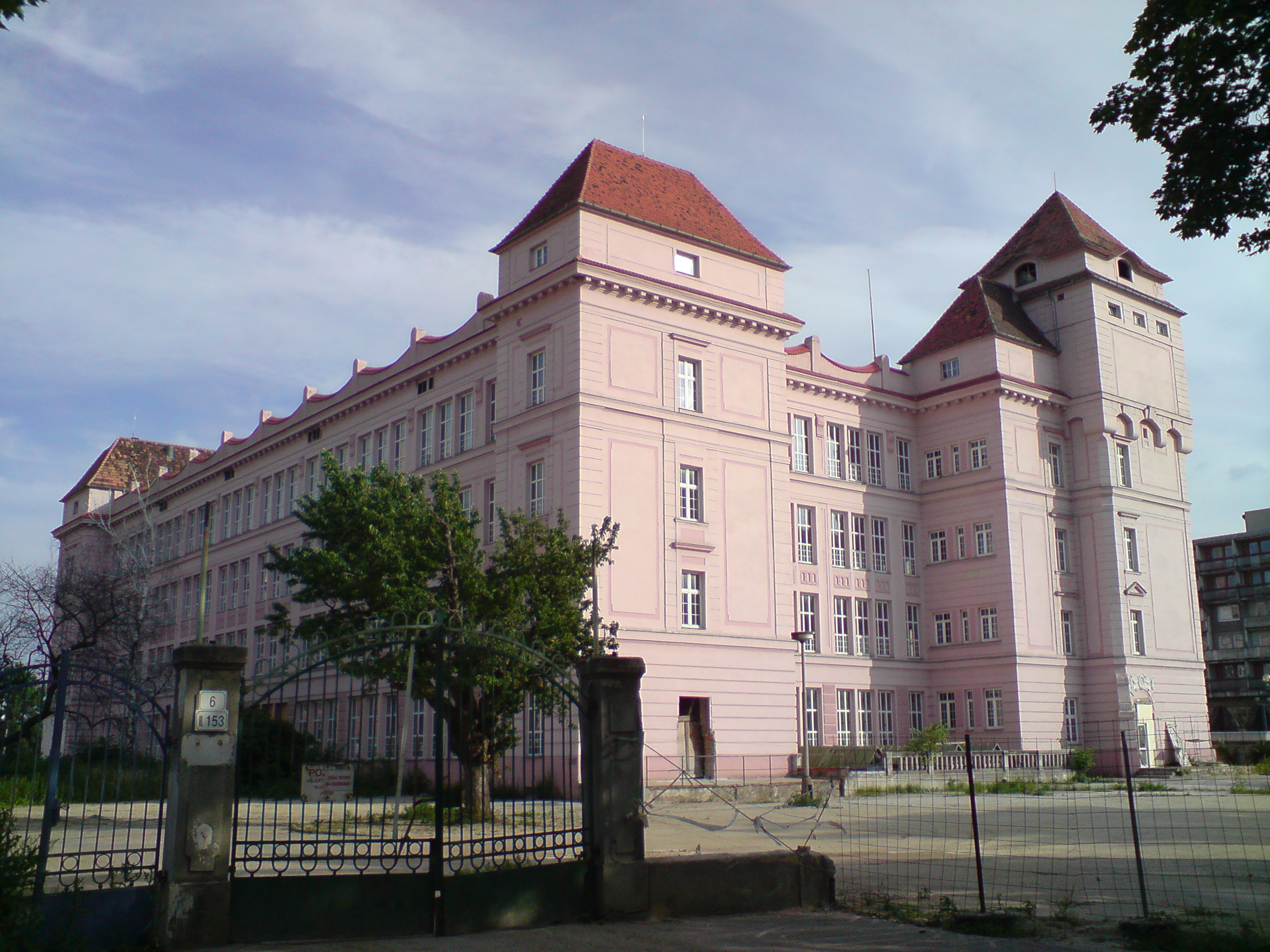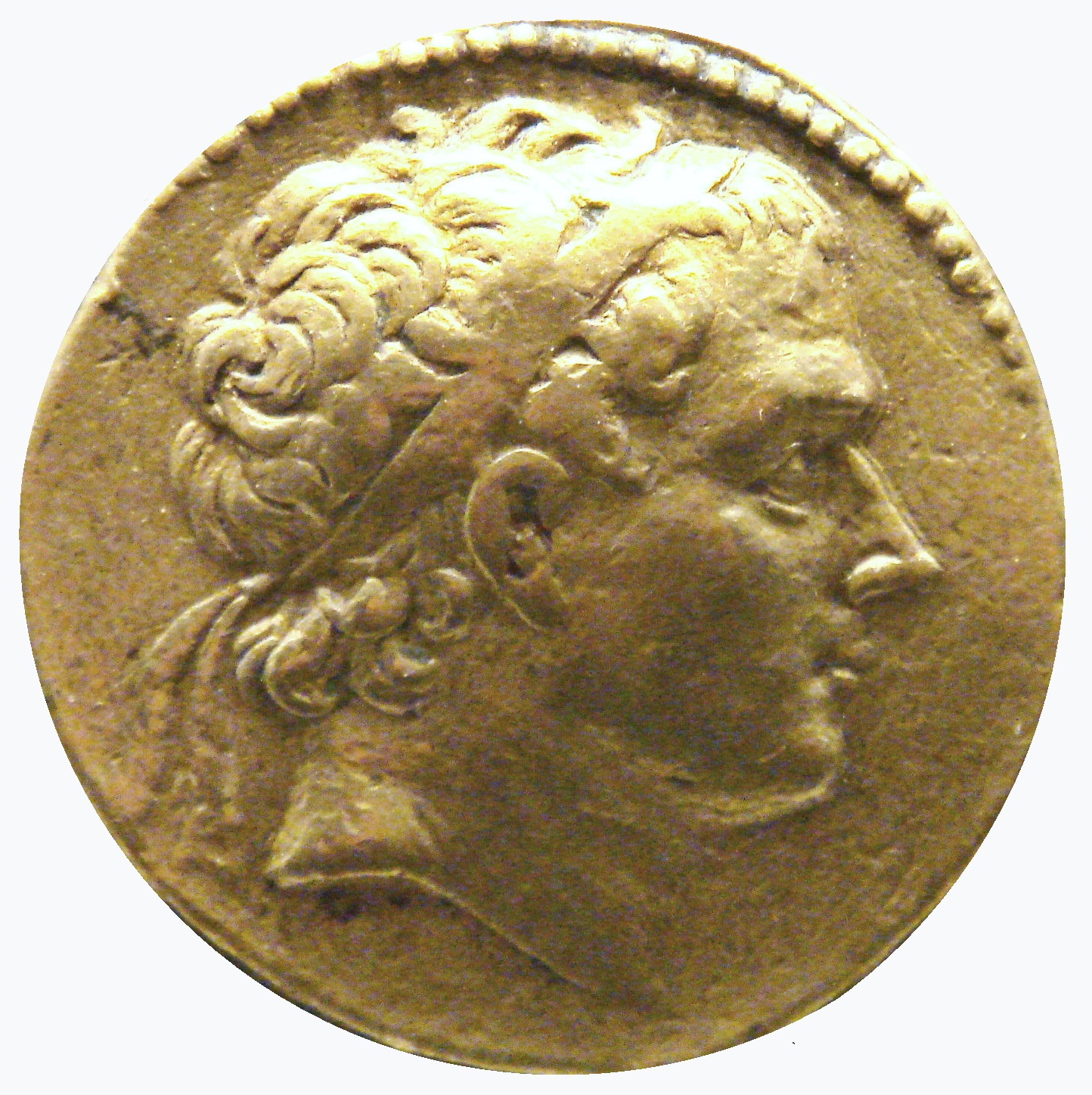|
Parchmentising
Parchmentising or parchmentizing is a kind of aesthetic finish for textiles. It is a finishing treatment for cellulose fabric that stiffens the fabric and imparts a degree of translucency. Parchment Parchment was a material for writing created in ancient times. It was created with animal skin. It means "stuff from Pregamos" in both the Latin and Greek language. Eumenes II developed parchment when papyrus was banned for export to Pregamos by Ptolemy V Epiphanes. The skin of sheep, goats, or cattle was used to create parchment. The parchmentising process involves the application of sulfuric acid to cellulosic textiles in order to achieve the characteristics of parchment. Organdy Parchmentising offers a stiffened and somewhat translucent finish. Organdy is one of the sheerest cloths produced by the process. Development Parchmentising was described in 1850 by John Mercer, who treated cotton with solutions of 110–125 °Tw sulfuric acid, at room temperature, followed by was ... [...More Info...] [...Related Items...] OR: [Wikipedia] [Google] [Baidu] |
Aesthetics (textile)
Aesthetics in textiles is one of the basic concepts of serviceability of textiles. It is determined by the perception of touch and sight. Aesthetics imply the appearance and attraction of textile products; it includes the color and texture of the material. It is a statement about the end user (consumer) and the target market. When combined with fabric construction, the finish of the clothing material, garment fit, style, and fashion compatibility, colours create an aesthetic comfort. All of these elements work together to satisfy our visual perception. Aesthetics incorporates the role of evaluation (analysing and judging) also. There are various arts and applications that imparts aesthetic properties in textiles. Additionally, the use of LEDs and optical fibres enables the creation of aesthetic properties such as illuminated textiles. History From antiquity until the eighteenth century, the majority of textiles were crafted and decorated by hand. Human ingenuity and the u ... [...More Info...] [...Related Items...] OR: [Wikipedia] [Google] [Baidu] |
Organdy
Organdy or Organdie is a kind of sheer fabric. It is a lightweight balanced plain weave cotton with features of sheerness and crispness. Characteristics Organdy is a stiffened material; sheerest among its peers, such as lawn cloth and Batiste. Often, these materials may come from the same grey goods, and are differentiated from each other in how they are finished. Organdy's sheerness and crispness are attributed to the acid finish (parchmentising) whereas the lawn is finished with starch or resin, and Batiste is a softer fabric type. Finer yarns with higher twist counts are used in superior quality organdy. Process Organdy is an acid stiffened cloth. Its sheerness and crispness is the result of an acid finish, where the fabric is treated with sulfuric acid solution for a short period and then neutralized to remove excessive acid. The process is named " parchmentising". The parchmentization is a treatment of acid on cellulosic textiles in the pursuit of obtaining the character ... [...More Info...] [...Related Items...] OR: [Wikipedia] [Google] [Baidu] |
Fibers
Fiber or fibre (from la, fibra, links=no) is a natural or artificial substance that is significantly longer than it is wide. Fibers are often used in the manufacture of other materials. The strongest engineering materials often incorporate fibers, for example carbon fiber and ultra-high-molecular-weight polyethylene. Synthetic fibers can often be produced very cheaply and in large amounts compared to natural fibers, but for clothing natural fibers can give some benefits, such as comfort, over their synthetic counterparts. Natural fibers Natural fibers develop or occur in the fiber shape, and include those produced by plants, animals, and geological processes. They can be classified according to their origin: *Vegetable fibers are generally based on arrangements of cellulose, often with lignin: examples include cotton, hemp, jute, flax, abaca, piña, ramie, sisal, bagasse, and banana. Plant fibers are employed in the manufacture of paper and textile (cloth), and diet ... [...More Info...] [...Related Items...] OR: [Wikipedia] [Google] [Baidu] |
Textile Industry
The textile industry is primarily concerned with the design, production and distribution of yarn, cloth and clothing. The raw material may be natural, or synthetic using products of the chemical industry. Industry process Cotton manufacturing Cotton is the world's most important natural fibre. In the year 2007, the global yield was 25 million tons from 35 million hectares cultivated in more than 50 countries. There are five stages of cotton manufacturing: * Cultivating and Harvesting * Preparatory Processes * Spinning — giving yarn * Weaving — giving fabrics * Finishing — giving textiles Synthetic fibres Artificial fibres can be made by extruding a polymer, through a spinneret (polymers) into a medium where it hardens. Wet spinning (rayon) uses a coagulating medium. In dry spinning (acetate and triacetate), the polymer is contained in a solvent that evaporates in the heated exit chamber. In melt spinning (nylons and polyesters) the extruded polymer is cooled in gas or ... [...More Info...] [...Related Items...] OR: [Wikipedia] [Google] [Baidu] |
Calender
A calender is a series of hard pressure rollers used to finish or smooth a sheet of material such as paper, textiles, rubber, or plastics. Calender rolls are also used to form some types of plastic films and to apply coatings. Some calender rolls are heated or cooled as needed. Calenders are sometimes misspelled ''calendars''. Etymology The word "calender" itself is a derivation of the word κύλινδρος ''kylindros'', the Greek word that is also the source of the word "cylinder". History In eighteenth century China, workers called "calenderers" in the silk- and cotton-cloth trades used heavy rollers to press and finish cloth. In 1836, Edwin M. Chaffee, of the Roxbury India Rubber Company, patented a four-roll calender to make rubber sheet. Chaffee worked with Charles Goodyear with the intention to "produce a sheet of rubber laminated to a fabric base". Calenders were also used for paper and fabrics long before later applications for thermoplastics. With the expansio ... [...More Info...] [...Related Items...] OR: [Wikipedia] [Google] [Baidu] |
Resist
A resist, used in many areas of manufacturing and art, is something that is added to parts of an object to create a pattern by protecting these parts from being affected by a subsequent stage in the process. Often the resist is then removed. For example in the resist dyeing of textiles, wax or a similar substance is added to places where the dye is not wanted. The wax will "resist" the dye, and after it is removed there will be a pattern in two colours. Batik, ''shibori'' and tie-dye are among many styles of resist dyeing. Wax or grease can also be used as a resist in pottery, to keep some areas free from a ceramic glaze; the wax burns away when the piece is fired. Song dynasty Jizhou ware used paper cut-outs and leaves as resists or stencils under glaze to create patterns. Other uses of resists in pottery work with slip or paints, and a whole range of modern materials used as resists. A range of similar techniques can be used in watercolour and other forms of painting. Whi ... [...More Info...] [...Related Items...] OR: [Wikipedia] [Google] [Baidu] |
Mercerising
Mercerisation is a textile finishing treatment for cellulose fabric and yarn, mainly cotton and flax, which improves dye uptake and tear strength, reduces fabric shrinkage, and imparts a silk-like luster. Development The process was devised in 1844 by John Mercer, who treated cotton with solutions of20–30% sodium hydroxide followed by washing. Mercer observed that the treatment shrank the fabric and increased its tensile strength and affinity for dyes. In the original process of Mercer, no tension was applied. The product was termed ''fulled cotton'', a nod to the process of fulling in woven wool fabric. Mercer regarded the increased affinity for dyes as the most important technical aspect. Mercer also experimented with sulfuric acid and zinc chloride solutions and discovered the parchmentising effect of sulfuric acid. The silk-like lustre now commonly associated with mercerising is produced by tension and was discovered by Horace Lowe in 1889. Process Treatment wit ... [...More Info...] [...Related Items...] OR: [Wikipedia] [Google] [Baidu] |
Twaddell Scale
The Twaddell scale is a hydrometer scale for reporting the measured specific gravity of a liquid relative to water. On this scale, a specific gravity of 1.000 is reported as 0, and 2.000 reports as 200. Concentrated sulfuric acid with a specific gravity of 1.8 has a Twaddell scale measurement of 160 (as per the linear relationship between readings and sp. gravity). The Twaddell scale is only used for liquids with specific gravity greater than that of water. The scale was used in the British dye and bleach manufacturing industries. While the Baumé scale was adopted throughout England, the Twaddell scale was used in England and Scotland. The scale is named after the scientific instrument manufacturer William Twaddell of Glasgow, who first developed hydrometers on this scale at the start of the 19th century. Converting between Twaddell scale and specific gravity let a = any degree of Twaddell's Hydrometer, x = specific gravity in relation to water taken at 1.000 :x = 0.005a + 1 :a ... [...More Info...] [...Related Items...] OR: [Wikipedia] [Google] [Baidu] |
John Mercer (scientist)
John Mercer (21 February 1791 – 30 November 1866) was an English dye and fabric chemist and fabric printer born in Great Harwood, Lancashire. In 1844 he developed a process for treating cotton, mercerisation, that improves many of its qualities for use in fabrics. Biography John Mercer never went to school; he learned basic reading and writing from his neighbour. He was very fond of dyeing and experimented to find new methods. With the help of a textbook he taught himself the chemistry of dyes. In 1817, he discovered Antimony orange, the first good orange pigment available for cotton-fabric printing. He developed the mercerisation process in 1844, and was admitted to the Royal Society, the Philosophical Society and the Chemical Society. Mercer pioneered research into antimicrobials, preventing the spread of cholera in Sykeside in 1847 with chloride of lime, or "calcium hypochlorite", which is today used to disinfect public swimming pools and drinking water. In 1814 he ... [...More Info...] [...Related Items...] OR: [Wikipedia] [Google] [Baidu] |
Sulfuric Acid
Sulfuric acid (American spelling and the preferred IUPAC name) or sulphuric acid ( Commonwealth spelling), known in antiquity as oil of vitriol, is a mineral acid composed of the elements sulfur, oxygen and hydrogen, with the molecular formula . It is a colorless, odorless and viscous liquid that is miscible with water. Pure sulfuric acid does not exist naturally on Earth due to its strong affinity to water vapor; it is hygroscopic and readily absorbs water vapor from the air. Concentrated sulfuric acid is highly corrosive towards other materials, from rocks to metals, since it is an oxidant with powerful dehydrating properties. Phosphorus pentoxide is a notable exception in that it is not dehydrated by sulfuric acid, but to the contrary dehydrates sulfuric acid to sulfur trioxide. Upon addition of sulfuric acid to water, a considerable amount of heat is released; thus the reverse procedure of adding water to the acid should not be performed since the heat released may boi ... [...More Info...] [...Related Items...] OR: [Wikipedia] [Google] [Baidu] |
Textile Finishing
In textile manufacturing, finishing refers to the processes that convert the woven or knitted cloth into a usable material and more specifically to any process performed after dyeing the yarn or fabric to improve the look, performance, or "hand" (feel) of the finish textile or clothing. The precise meaning depends on context. Fabric after leaving the loom or knitting machine is not readily useable. Called grey cloth at this stage, it contains natural and added impurities. Sometimes it is also processed at fiber or yarn stages of textile manufacturing. Grey fiber or yarn or fabric goes through a series of processes such as wet processing and finishing. Finishing is a broad range of physical and chemical treatments that complete one stage of textile manufacturing and may prepare for the next step, making the product more receptive to the next stage of manufacturing. Finishing adds value to the product and makes it more attractive, useful, and functional for the end-user. Improvi ... [...More Info...] [...Related Items...] OR: [Wikipedia] [Google] [Baidu] |
Ptolemy V Epiphanes
egy, Iwaennetjerwymerwyitu Seteppah Userkare Sekhem-ankhamun Clayton (2006) p. 208. , predecessor = Ptolemy IV , successor = Ptolemy VI , horus = '' ḥwnw-ḫꜤj-m-nsw-ḥr-st-jt.f''''Khunukhaiemnisutkhersetitef'' The youth who has appeared as king on his father's throne , horus_hiero = H-wn:n-nw:W-A17-xa:a:W*Z4-Aa15:sw*A43-D2:Z1-Q1-t:O1-t:f:Z1:f , nebty = ''wr-pḥtj smn-tꜢwj snfr-tꜢmrj mnḥ-jb-ḫr-nṯrw''''Werpehty Sementawy Senefertameri Menekhibkhernetjeru''The one great of strength, who has established the Two Lands and made Ta-mery perfect (by) being efficacious before the gods , nebty_hiero = wr:r-F9*F9:Z9:D40-s-U32-wAD-M24-s-nfr-N16:N21\*N21:O5*t:O49-mnx-ib:Z1-x:r-nTr*Z1-nTr*Z1-nTr*Z1 , golden = '' wꜢḏ-Ꜥnḫ-n-ḥnmmt nb-ḥbw-sd-mj-ptḥ jty-mj-rꜤ''''Wadjankhenkhenmemet Nebkhebusedmiptah Itymire'' The one who has made the life of mankind flourish, a possessor of Sed festivals like Ptah and a sovereign like Ra , golden_h ... [...More Info...] [...Related Items...] OR: [Wikipedia] [Google] [Baidu] |

.jpg)







